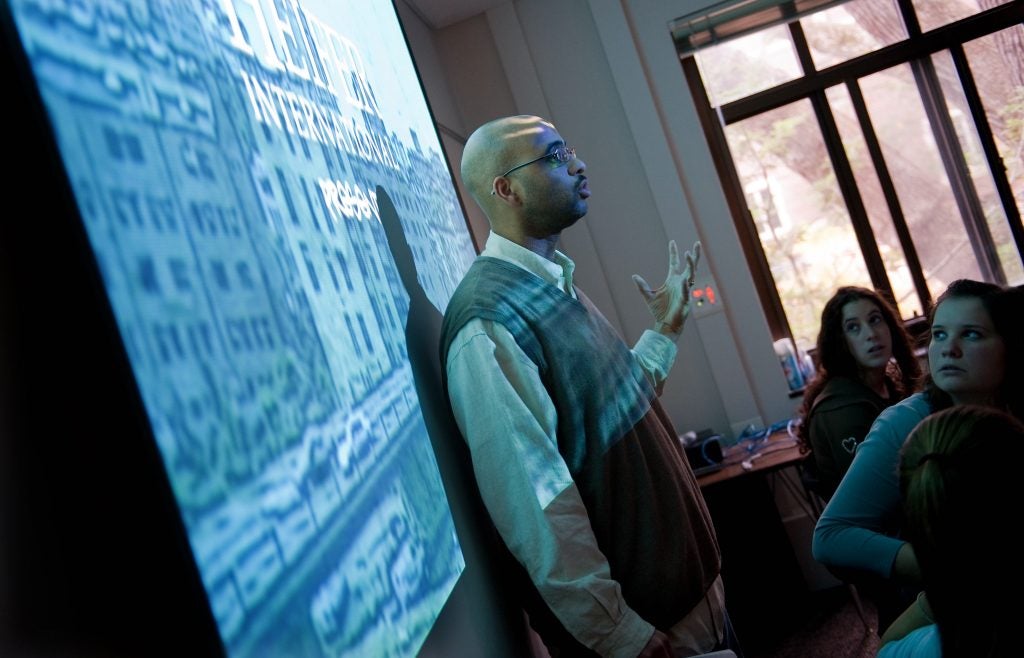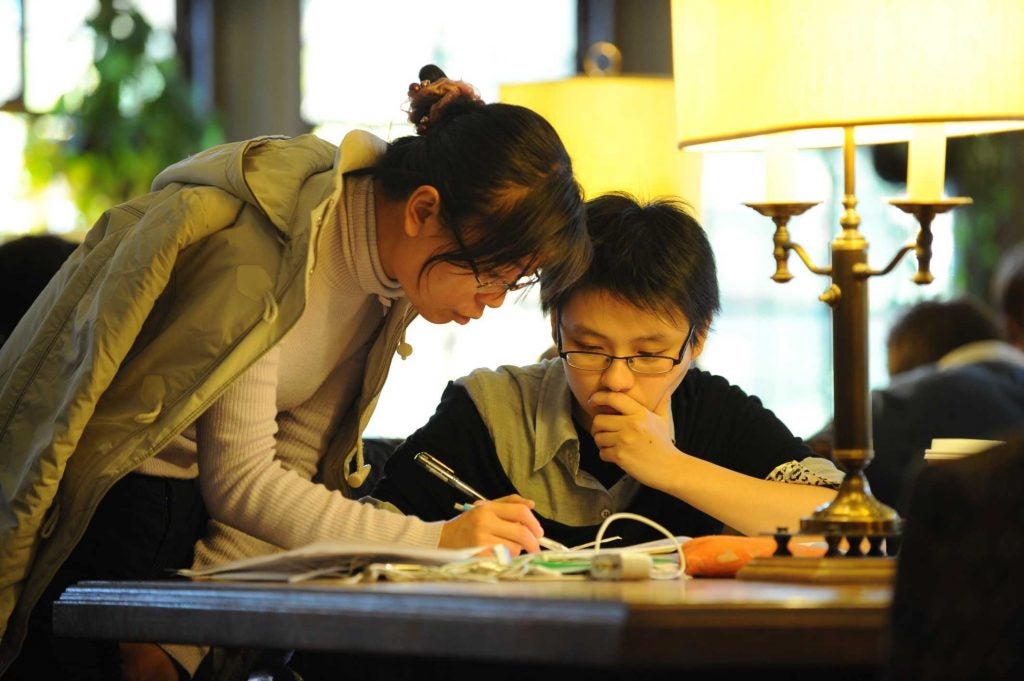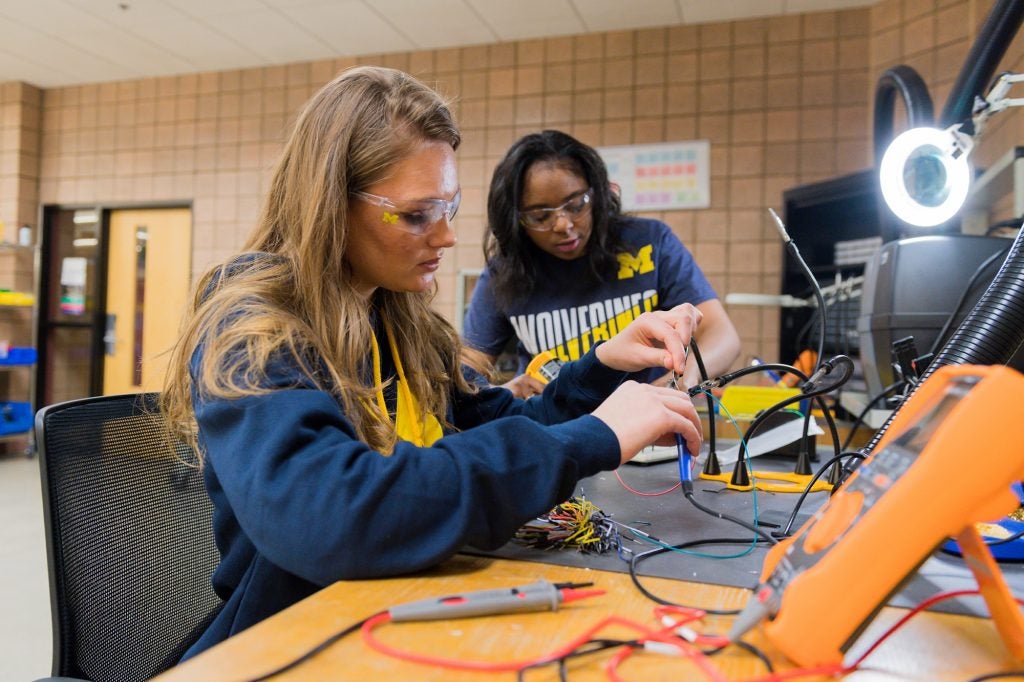
Resources for STEM Courses
STEM Courses Overview
STEM classrooms are often overlooked in the area of inclusive education. According to the National Center for Science and Engineering Statistics, “Women, persons with disabilities, and underrepresented minority groups—blacks or African Americans, Hispanics or Latinos, and American Indians or Alaska Natives—are underrepresented in science and engineering (S&E).” Furthermore, a 2010 study conducted by the Higher Education Research Institute at UCLA found in a national sample of 2004 college freshman that 33% of White students completed their bachelor’s degree in STEM within five years compared to 22% of Latino students and 18% of Black students. Yet, while there needs to be a focus on underrepresented groups in STEM, inclusive pedagogy encapsulates all students in the classroom. This journal article outlines the critical need for STEM professors to learn about and implement inclusive teaching practices in their STEM classroom, stating that inclusive pedagogy, “should not solely focus on deficits of the disenfranchised, but also on opportunities for students to learn and grow from the diverse authentic experiences of their peers.” Providing students opportunities to develop relationships in your STEM course can cultivate a sense of community which can lead to positive academic outcomes.
Although representation and graduation rates continue to be a challenge for underrepresented groups in STEM, there are techniques that can be added to any STEM classroom to improve the experience of all students and increase the inclusivity of the course. Introducing the class to a diverse body of experts in the field who are women or people of color can go far to improve the experience of the course. You will also find a section devoted to STEM Education on the Recommended Readings page.
On this page, you will find resource and activity guides that will assist you in learning more about inclusion in STEM and provide you with activities that actively promote inclusion in your STEM classroom. At the bottom of the page, you will find links to organizations that are working to improve inclusivity in the STEM field.
How to use these Resources:
The following resources have been curated specifically for STEM courses. The Resource Guides provide materials, readings, and strategies to further one’s knowledge and practice regarding inclusivity in STEM courses. The Activity Guides provide in-class activities that can be used to build inclusivity in the classroom. These resource and activity guides are but a few of the many you can find on this website. If you are interested in additional resource and activity guides, you can find our resource guide catalogue on the Planning Page and our activity guide catalogue on the Activities Page.
Within each resource and activity guide, you will find:
- An Overview, providing further context about the guide and its relation to inclusive classrooms
- The goals associated with the resource or activity
- For activity guides, a description of their application in a STEM course
- Two files containing a PDF and Docx version of the guide
- An associated video, where applicable, to provide additional insights into the topic
Resource Guides to Deepen Understanding of Inclusivity in STEM Courses:
Activity Guides that Promote Inclusivity in STEM Courses:
Faculty Perspectives – Incorporating Inclusion On Any Topic
Additional Resources to Explore:
- 39 LGBTQ+ STEM Innovators and Resources – Published by Columbia University’s Engineering Boot Camp programs, this resource highlights inspiring, innovative individuals and organizations that have supported, celebrated, and/or made significant contributions to the LGBTQ+ tech community.
- Sloan Equity and Inclusion in STEM Introductory Courses (SEISMIC) – Comprised of 10 public research universities, the SEISMIC Collaboration is a collection of educators, researchers, students, student support staff, and more who work in higher education and are committed to increasing equity and inclusion in STEM.
- Latinas in STEM – Founded by MIT graduates, Latinas in STEM aims to inspire and empower Latinas to pursue, thrive and advance in Science, Technology, Engineering & Mathematics (STEM) fields.
- Pride in STEM – Pride in STEM is a charitable trust run by an independent group of LGBT+ scientists & engineers from around the world, focusing on sharing the voices of LGBT+ individuals in STEM who want to show that science is for everyone.
- Annual Biomedical Research Conference for Minority Students – This annual conference was founded to encourage minority, first-generation, veteran, and disabled students to pursue higher education in STEM. Today, ABRCMS is one of the largest professional conferences for underrepresented students.
- Women in STEM – Founded in 2017 at the University of Chicago Lab Schools, Women in STEM aims to empower and inspire girls through offering a variety of opportunities at the high school level.
- Society of Women Engineers – Society of Women Engineers seeks to empower women to achieve full potential in careers as engineers and leaders, expand the image of the engineering and technology professions as a positive force in improving the quality of life, and demonstrate the value of diversity and inclusion.
- Society for Advancement Chicanos/Hispanics and Native Americans in Science (SACNAS) – SACNAS is an inclusive organization dedicated to fostering the success of Chicanos/Hispanics and Native Americans, from college students to professionals, in attaining advanced degrees, careers, and positions of leadership in STEM.
- A Guide for Women in STEM: Closing the Gender Gap – Resource guide on challenges women face in the STEM field and how to support them throughout their education and career.
Reuse Permissions
We appreciate your interest in our site. Generally, we are very happy to have our resources widely used in educational settings of all kinds. Reuse in a classroom, webinar/ professional development, or for individual reflection are all appropriate, so long as it is not for commercial purposes. If you share our resources, we ask that you please include an acknowledgement of our website or specific page reference, as suggested in our Reuse Permissions Guide in APA or MLA format, in addition to any acknowledgement of the original authors.
If you have any questions, please feel free to contact us via the Contact Form.










